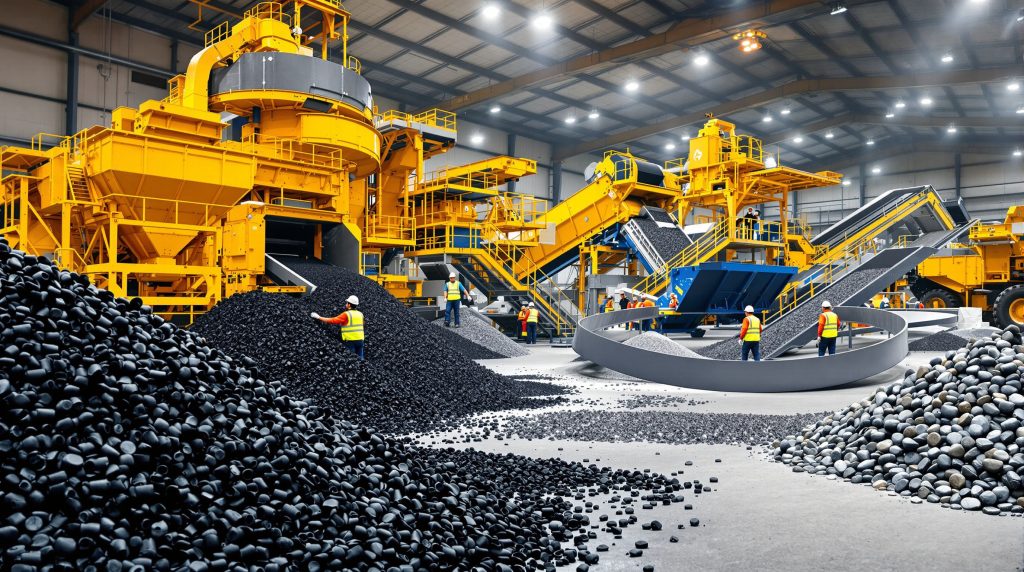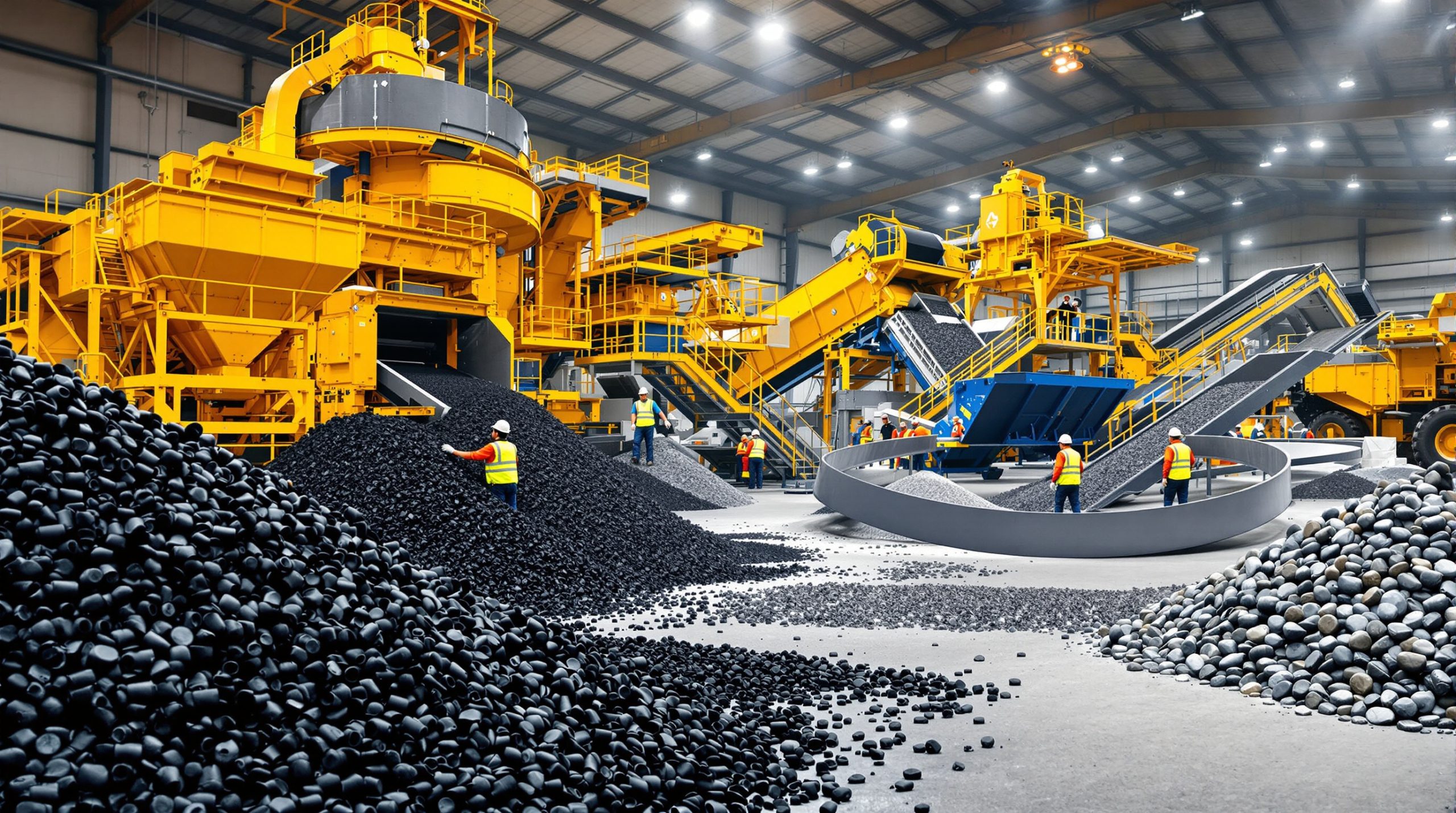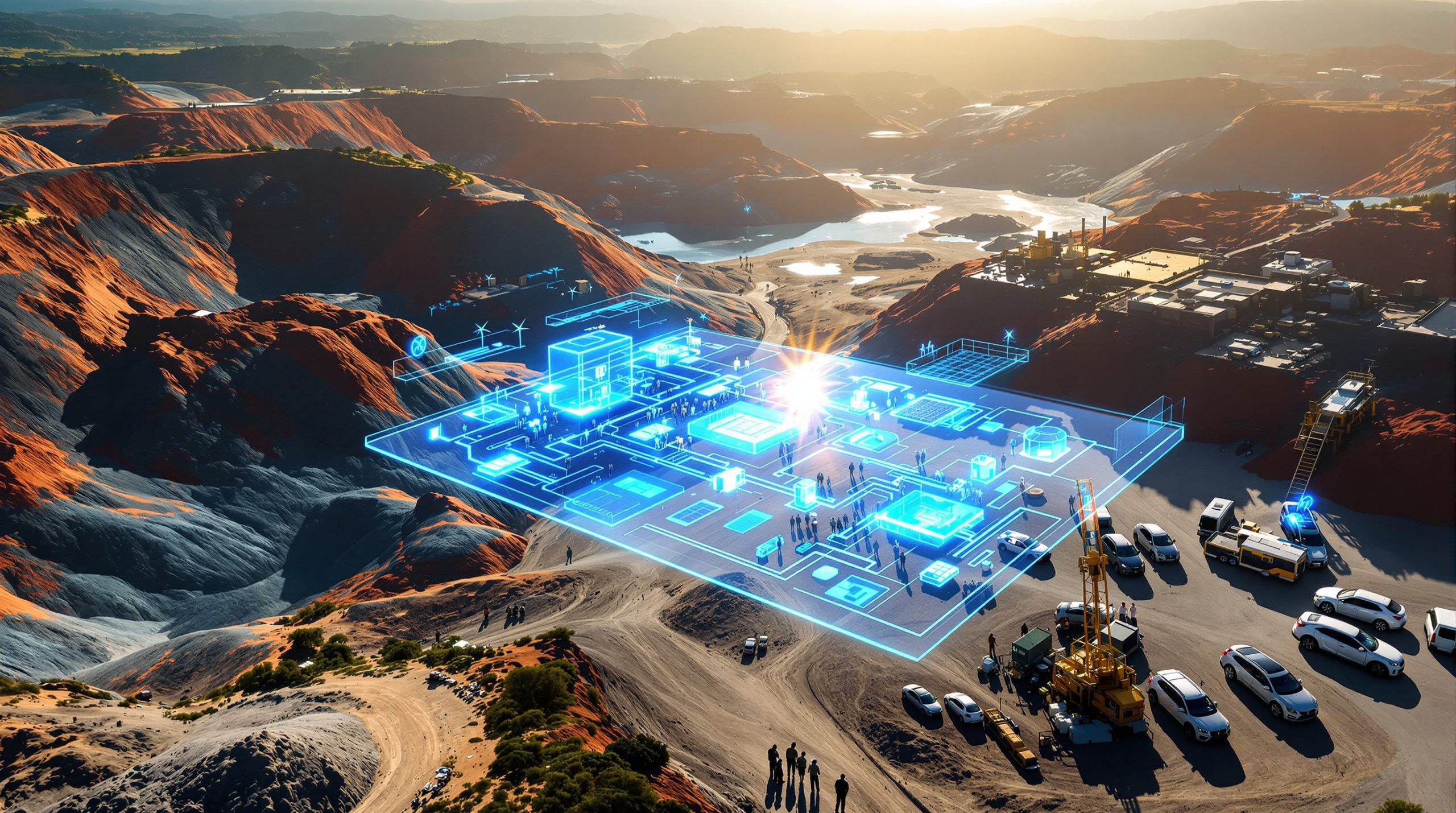Revolutionizing Mining Sustainability: The Complete Guide to Conveyor Belt Recycling
Mining operations rely heavily on conveyor belt systems to transport materials efficiently across vast distances. However, these essential components eventually wear out, creating a significant waste management challenge. Modern recycling approaches are transforming this challenge into an opportunity for sustainability and resource recovery.
Conveyor belt recycling involves specialized processes that separate composite materials into reusable components. This systematic breakdown allows mining companies to recover valuable resources while reducing environmental impact.
The Composition Challenge: What Makes Conveyor Belts Difficult to Recycle
Mining conveyor belts typically consist of multiple bonded layers:
- Outer rubber covers (natural or synthetic rubber compounds)
- Reinforcement layers (steel cords, fabric, or polyester)
- Inner rubber layers
- Specialized coatings for specific applications
This complex construction creates recycling challenges, as traditional methods struggle to separate these bonded materials effectively. However, innovative technologies are now making complete material recovery possible.
What Are the Environmental Benefits of Conveyor Belt Recycling?
Reducing Landfill Impact
Mining operations can generate substantial waste when conveyor belts reach the end of their service life. Recycling these materials delivers significant environmental benefits:
- Diverts thousands of tonnes of rubber and metal from landfills annually
- Reduces methane emissions from decomposing rubber in landfills
- Minimizes the environmental footprint of mining operations
- Supports ESG (Environmental, Social, Governance) commitments
Resource Conservation Through Material Recovery
The recycling process recovers valuable materials that can be redirected into manufacturing streams:
| Material | Recovery Rate | Applications for Recycled Material |
|---|---|---|
| Rubber | 60-80% | Road surfaces, new belts, mats, mulch |
| Steel | 95-99% | Construction, manufacturing, new belting |
| Fabric/Polyester | 40-60% | Insulation, composite materials |
What Technologies Drive Modern Conveyor Belt Recycling?
Mechanical Separation Systems
Advanced recycling facilities employ specialized equipment to process conveyor belts:
-
Shredding and Granulation
- Industrial shredders reduce belts to manageable pieces
- Granulators further process rubber into various particle sizes
- Size reduction facilitates more efficient material separation
-
Magnetic Separation
- Powerful magnets extract steel cords and reinforcement
- Multiple magnetic stages ensure thorough metal recovery
- Separated steel is bundled for smelting and reuse
-
Density Separation
- Water-based systems separate materials by density
- Fabric and rubber components are isolated from each other
- Enables higher purity in recovered materials
Chemical Processing Innovations
For particularly challenging composite belts, chemical processes may be employed:
- Solvent-based separation techniques for PVC belts
- Devulcanization processes that break sulfur bonds in rubber
- Pyrolysis systems that convert rubber to oil, gas, and carbon black
How Are Mining Companies Implementing Conveyor Belt Recycling Programs?
Case Study: Western Australia's Closed-Loop Initiative
In Western Australia, a partnership between Fenner Conveyors and Tyrecycle has created a closed-loop system for mining conveyor belts:
-
Collection and Transportation
- Service teams remove old belts during scheduled changeouts
- Specialized handling equipment manages heavy steel-cord belts
- Belts are transported to regional processing facilities in Port Hedland or East Rockingham
-
Processing and Material Recovery
- High-powered Danish-designed equipment processes steel-reinforced belting
- Recovered rubber is categorized by quality and composition
- Steel is extracted and sold to metal recycling markets
-
Remanufacturing
- Recovered rubber compounds are incorporated into new belt production at Fenner's Kwinana manufacturing hub
- Local manufacturing facilities use recycled content in new products
- Mining companies receive new belts containing their recycled materials
This initiative has already processed over 1,000 tonnes of conveyor belting and been accepted by downstream partners, demonstrating the viability of large-scale recycling programs.
What Are the Economic Benefits of Conveyor Belt Recycling?
Cost Savings for Mining Operations
Recycling conveyor belts delivers multiple financial advantages:
- Reduced waste disposal costs
- Potential revenue from recovered materials
- Lower environmental compliance expenses
- Decreased transportation costs for waste management
Creating Circular Economy Opportunities
The recycling process generates economic activity beyond the mining sector:
- Employment in recycling and processing facilities
- Manufacturing opportunities for recycled rubber products
- Development of specialized equipment and technologies
- Consulting services for sustainability programs
Furthermore, the mining industry evolution is increasingly focused on sustainability and circular economy principles that maximize resource efficiency.
How Can Mining Operations Prepare Belts for Recycling?
Best Practices for Belt Removal and Handling
Proper preparation maximizes recycling efficiency:
-
Documentation
- Record belt specifications and composition
- Document service history and failure modes
- Provide information on any contamination
-
Cleaning and Preparation
- Remove excessive dirt and debris
- Cut belts into manageable lengths for transport
- Separate different belt types where possible
-
Storage and Transportation
- Protect belts from weather exposure
- Use appropriate handling equipment
- Coordinate with recycling facilities for efficient logistics
Implementing effective waste management solutions is becoming increasingly important for mining operations looking to minimize their environmental footprint.
What Innovative Products Are Made From Recycled Conveyor Belts?
Beyond Basic Recycling: Value-Added Applications
Recycled conveyor belt materials find new life in diverse applications:
-
Infrastructure Applications
- Road construction additives
- Railway components
- Noise barriers and impact protection
-
Agricultural Uses
- Livestock mats and stable flooring
- Erosion control products
- Irrigation system components
-
Industrial Products
- Vibration dampening pads
- Protective mats for workspaces
- Composite materials for construction
-
Consumer Goods
- Outdoor furniture components
- Footwear soles and components
- Recreational surfaces and playground materials
What Are the Challenges in Conveyor Belt Recycling?
Overcoming Technical and Logistical Hurdles
Despite progress, several challenges remain:
-
Material Complexity
- Diverse belt compositions require different processing approaches
- Heat-resistant belts may contain difficult-to-recycle compounds
- Food-grade belts have specific contamination concerns
-
Geographic Constraints
- Remote mining operations face high transportation costs
- Regional processing capacity may be limited
- Cross-border movement of waste materials faces regulatory hurdles
-
Quality Control
- Maintaining consistent quality in recycled materials
- Managing contamination from operational environments
- Ensuring recycled content meets performance standards
However, the focus on sustainable mining transformation is driving innovation to overcome these challenges.
How Is Technology Improving Conveyor Belt Recycling Efficiency?
Next-Generation Recycling Innovations
Emerging technologies promise to enhance recycling capabilities:
-
Automated Sorting Systems
- Computer vision and AI identify different belt types
- Robotic systems separate materials more precisely
- Continuous monitoring ensures quality control
-
Mobile Processing Units
- Containerized recycling systems for remote locations
- On-site processing reduces transportation costs
- Scalable solutions for different operation sizes
-
Advanced Material Analysis
- Spectroscopic techniques identify belt composition
- Real-time analysis optimizes processing parameters
- Detailed documentation supports quality assurance
The industry's commitment to mine reclamation innovation extends to all aspects of mining waste, including conveyor belt recycling.
What Regulatory Considerations Apply to Conveyor Belt Recycling?
Navigating Compliance Requirements
Mining operations must address various regulations:
-
Waste Classification
- Determining whether belts are classified as hazardous waste
- Meeting transportation requirements for industrial materials
- Documenting chain of custody for regulatory compliance
-
Environmental Permits
- Processing facilities require appropriate licensing
- Emissions and discharge controls for recycling operations
- Reporting requirements for material recovery activities
-
International Considerations
- Cross-border movement of waste materials
- Compliance with Basel Convention for international shipments
- Documentation requirements for material exports
How Can Mining Companies Measure Recycling Program Success?
Key Performance Indicators for Belt Recycling
Effective programs track multiple metrics:
-
Volume Metrics
- Total weight of belts diverted from landfill
- Percentage of available belts captured for recycling
- Material recovery rates by component
-
Financial Indicators
- Cost savings from reduced waste disposal
- Revenue generated from recovered materials
- Net program costs compared to traditional disposal
-
Environmental Impact
- Carbon emissions avoided through recycling
- Water conservation from closed-loop processes
- Reduction in virgin material consumption
Many companies are now recognizing the decarbonisation benefits associated with comprehensive recycling programs.
FAQs About Conveyor Belt Recycling
What types of conveyor belts can be recycled?
Most industrial conveyor belts can be recycled, including rubber belts with steel cord reinforcement, fabric-reinforced rubber belts, and PVC belts. Even specialized belts with fire-resistant or oil-resistant compounds can be processed, though they may require different recycling approaches.
How long does the recycling process take?
The timeline varies based on belt volume and composition. Typically, processing takes 2-4 weeks from collection to material recovery. Steel cord belts require more intensive processing than fabric-reinforced varieties.
Can contaminated belts be recycled?
Yes, though contamination may affect processing methods. Belts exposed to oils, chemicals, or minerals undergo cleaning processes before recycling. Severely contaminated sections may be removed if they would compromise recycled material quality.
Is conveyor belt recycling economically viable?
For most mining operations, recycling is cost-competitive with disposal, especially when considering landfill fees and transportation costs. As recycling technology improves and regulatory pressures increase, the economic advantages continue to grow.
How can mining companies start a conveyor belt recycling program?
Begin by contacting specialized recycling providers or belt manufacturers with recycling programs. Many offer site assessments to evaluate belt volumes, types, and logistics requirements. Start with a pilot program focused on the most readily recyclable belt types before expanding.
The Future of Conveyor Belt Recycling in Mining
The mining industry's transition toward sustainability includes finding solutions for historically challenging waste streams. Conveyor belt recycling represents a significant opportunity to reduce environmental impact while recovering valuable materials.
As technology advances and partnerships between manufacturers and recyclers strengthen, the possibilities for closed-loop systems continue to expand. Mining operations implementing comprehensive belt recycling programs not only address immediate waste management challenges but also position themselves as leaders in industrial sustainability.
The transformation of mining's toughest waste into valuable resources demonstrates how innovation and collaboration can turn environmental challenges into opportunities for a more sustainable future.
Further Exploration:
Readers interested in learning more about sustainable mining practices and industrial recycling can also explore related educational content from Australian Mining, such as their article on conveyor belt recycling partnerships in the Western Australian mining sector.
Ready to Invest in the Next Major Mineral Discovery?
Don't miss out on potentially transformative ASX mining opportunities! Discover how significant mineral announcements have historically generated substantial returns by exploring Discovery Alert's dedicated discoveries page, where the proprietary Discovery IQ model provides real-time alerts on emerging opportunities ahead of the broader market.




